To play your favorite video game on better, higher settings, you will need to purchase a dual graphics card.
As you may or may not know already, Nvidia and AMD both allow setup with more than one graphics card, as two ones will enable a performance boost. And the best one you can get for a better gaming experience is EVGA GeForce GTX 1650.
So, how exactly will dual graphics cards improve gaming PCs? Also, are there any disadvantages of multi GPU you should be aware of?
You can find all of the answers in this article, as well as a few recommendations for multiple graphics cards in case you haven’t already decided which one to get.
Table of Contents
How Does Multi GPU Work?
Let’s start with the basics – how will dual GPU cards work?
Well, Nvidia and AMD are two technologies that allow two separate cards to work as one. The entire workload is shared between these two cards. Thus, the system or gaming pc is receiving double computer power.
In this way, dual graphics cards will enable the rendering of the scenes. One GPU card will render while in line while the other is working on the next one, thus increasing the efficiency of the entire system.
Your PC will handle demanding conditions easily, and performance is boosted.
Requirements for Multi GPU
If you want to implement dual graphics cards, you will first have to check whether the rest of your gaming setup can support it.
For starters, you will have to use either Nvidia or AMD.
The graphics solution for Nvidia is called the SLI, and AMD’s is Crossfire.
Features of both have to be allowed in the GPU driver control panel.
Furthermore, SLI or Crossfire needs to be compatible with the streaming motherboard, as well as the PCI Express graphics slot. You can check this compatibility on the packaging of the motherboard (if you still have one) by searching for the symbol for one of these two technologies.
This compatibility is listed in the motherboard’s specifications, so all you have to do is find the model you own in any online tech store.
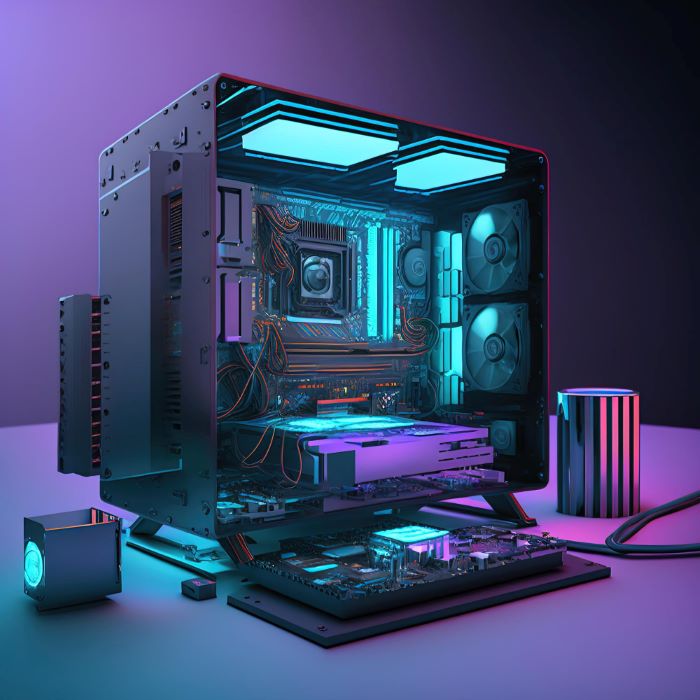
The second requirement is the desktop case. If it is not large enough for additional hardware you plan on adding, you can forget about increasing gaming performance in this way.
The desktop case should be able to support an additional GPU card as well as provide an extra power supply.
Last but not least, a bridge connector is needed. It combines the two graphics cards and connects them with the motherboard. Often this part is already incorporated with either GPU or motherboard.
Running Two Graphics Cards Without SLI or Crossfire
Yes, it is possible to run dual GPU without SLI, but only if you own two monitors.
In this situation, the workload is evenly separated between two GPUs. Thus, the performance of PC games is improved.
Rendering will be done on one monitor or one graphics card, while the other will handle video games or any other task.
The one thing you should check before adding an extra GPU is whether the CPU can handle that extra workload.
Who Should Get a Dual GPU?
So, do you really need a dual GPU, or will your video game work just fine without it?
If you are an average gamer, the games you are running will work well even without dual graphics cards. They could improve the efficiency of the system, but since the setup is a bit demanding and more power is required, it would be a waste of your time.
Instead of getting a dual graphics card, buy a high-quality single GPU – in this way you will reduce the cost, won’t overbear the PC hardware, and it makes more sense in the end. Nowadays, most single graphics cards do not come with SLI and Crossfire setups.
Professional gamers and streamers could benefit from dual graphics cards. An additional graphics card will produce better 3D output, as well as rendering for different streaming platforms.
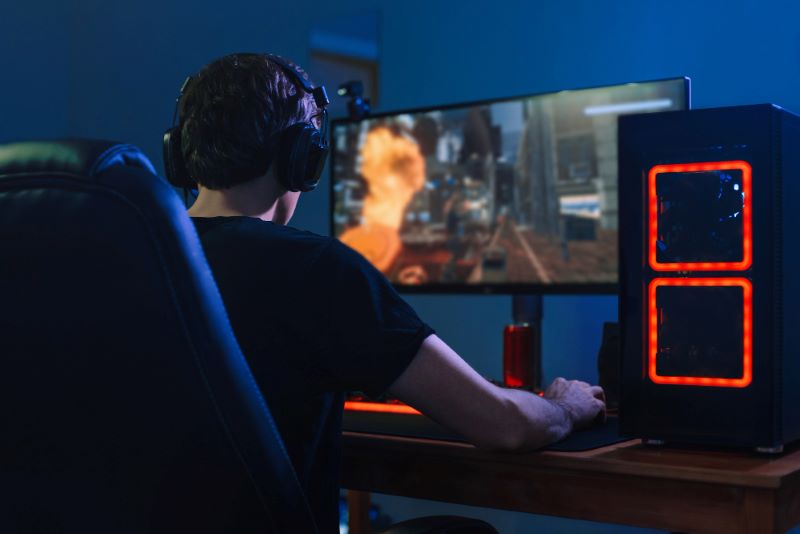
During the broadcast, you won’t have to worry about dropping frames even when streaming with high frame rates, as one graphics card will do the rendering, while games will be run on another.
Multimedia experts could also benefit from using dual graphics cards. When it comes to Adobe Suit, it has already selected SLI support, so if you are using Lightroom or Premiere, they will run smoothly on Nvidia technology.
Pros and Cons of Multiple Graphics Cards
Now, let’s discuss some pros and cons. Are there more advantages or disadvantages of dual graphics cards?
Here are some of the benefits of implementing an additional graphics card:
- Boosted gaming experience – Instead of one card rendering the video, there will be two of them splitting the work. This means that you can increase bandwidth, frame rates, and resolution, which will all add to both graphics quality, as well a better gaming experience;
- Improved resolution – Resolution can be significantly boosted. As you may already know, single GPUs, even the best ones, offer a resolution of 1080p. For certain games, this is more than enough. However, new technology enables a 4k display with a resolution increased four times;
- Upgrades – As stated, adding an extra GPU requires compatible hardware (motherboard, power supply, and large case). Upgrading is later easier – you can expect a new update in around two years, but your systems won’t require these updates as soon.
- Use of multiple monitors – If you choose to add another graphics card, you can also add another monitor. While the game is running on one card, the other will handle rendering, which increases performance.
As you can see benefits are numerous, but I have to mention the disadvantages as well:
- Performance – In most cases, dual graphics cards should increase the performance of the PC. Unfortunately, it won’t always be the case. Its efficiency strongly depends on the PC itself. Many home PCs have cut-price processors, so less data is delivered to the graphics card by PC is not sufficient;
- Compatibility – Another thing that has to be mentioned is the compatibility issues that often occur. As said, for dual graphics GPU to run, you need to have a compatible motherboard, graphics slots, as well a bridge connector. Graphics card setup consists of many parts, and if the game doesn’t support it, the performance will be worse, as the game will be choppy;
- Power consumption – An additional GPU will require an additional power supply. The power needed to run two graphics cards is often doubled, and you need to check whether your PC can stand that power supply and high wattage.
- Overall expenses – In the end, we need to talk about the cost. Dual graphics cards are expensive, plus you have to take into account the money spent on GPU setup. Now add the power cost to that amount. As you can see, in the end, it may not be the best solution, especially if the games you are playing are not supported by Nvidia SLI or AMD Crossfire.
So, is it worth it?
Depends on what you plan on doing with the dual graphics card.
For a professional gamer, it would be the best solution, as the performance would be increased, and the audience would enjoy high frame rates and resolution.
However, for an amateur, it is not necessary to purchase another GPU. Your game will run perfectly on a high-end single GPU.
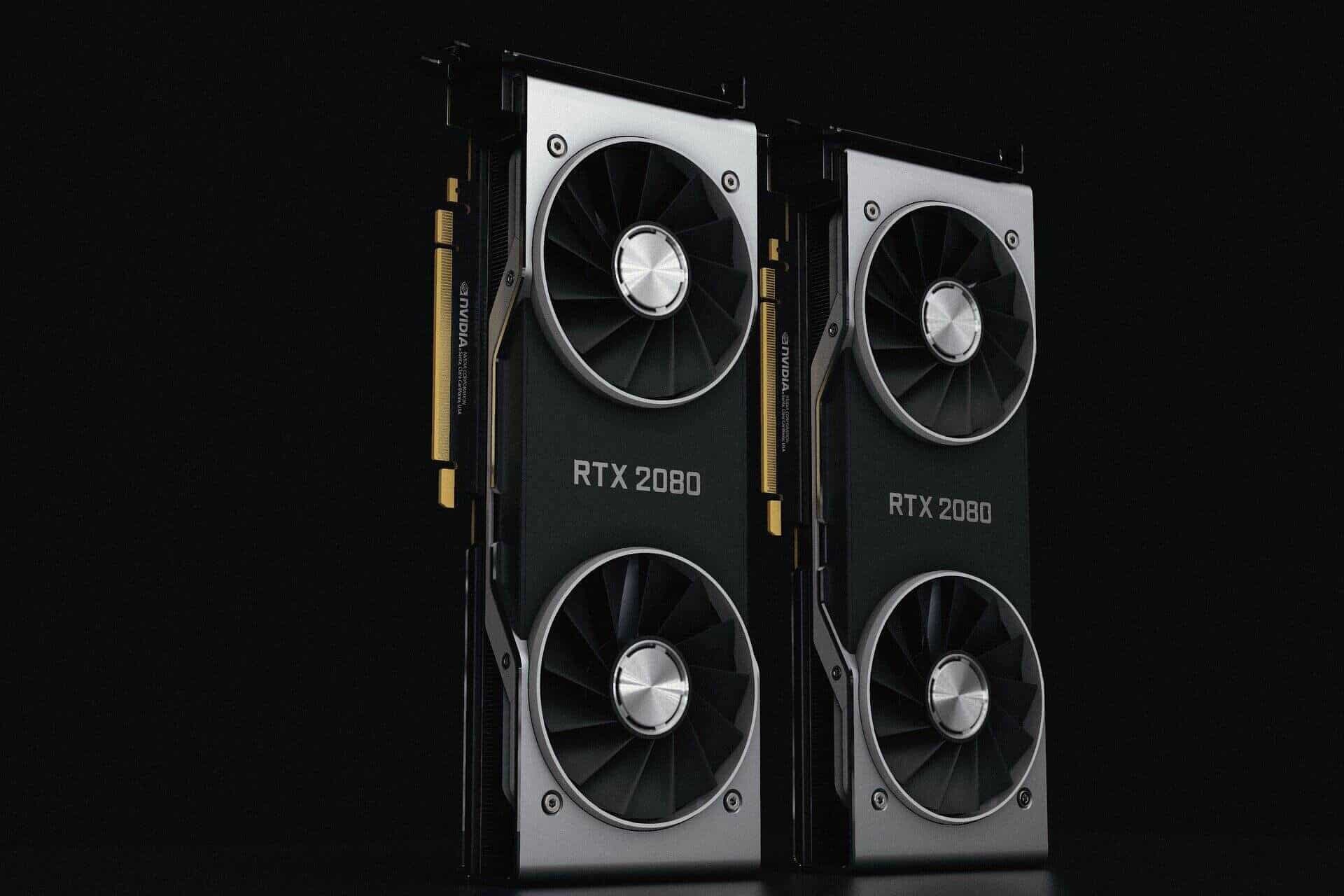
Best Dual Graphics Cards
Tested & Reviewed
In case you aren’t sure which dual GPU to get, check out the products from the list below.
1. EVGA GeForce GTX 1650
Best overall
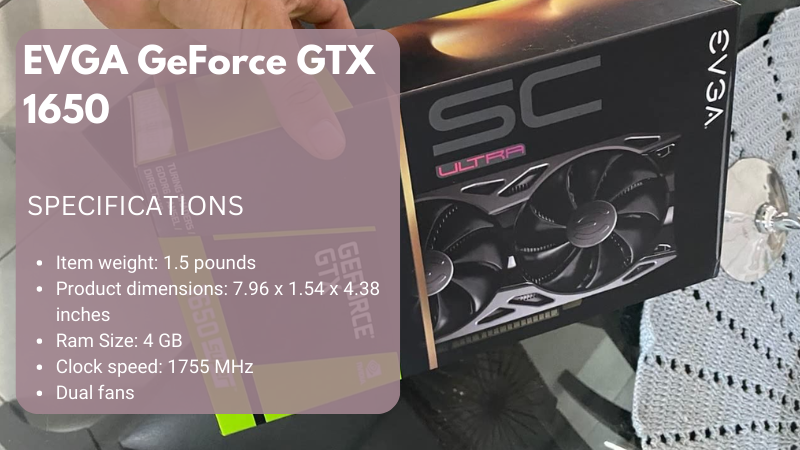
Stefan’s Take:
This graphic card performed beyond my expectations. While I couldn’t run some of my games on max settings, I could still play most of them on high settings, which is good enough for me.
It has an incredible memory bandwidth, a built-in cooling fan, and RAM size. But what truly amazed me the most was the turning technology.
My gaming experience was smooth, fast, and immersive thanks to improved Turing architecture. The quality of the image was outstanding, and I didn’t have to deal with dropped frames.
| Memory | 9 |
|---|---|
| Cooling | 10 |
| Clock speed | 10 |
| Power | 10 |
Nvidia is known for creating the fastest graphics cards, so the first on the list is EVGA GeForce GTX 1650 Super SC Ultra Gaming.
The price could be a problem for some, as these types of GPUs are on the higher end, but considering what SLI has to offer, it will be worth it in the long run.
This model significantly promotes the performance of the entire system and it could resolve common problems such as frame drop during the live stream or just boost the graphics of the games.
Let’s take a look at the specs!
Key features
GTX 1650 Super has a superior cooling system compared to similar models, as well as 4GB of Ram, which should boost the efficiency up to 50%.
If you have owned one of their previous series, such as the GTX 1060 or 10 series, once you switch to this one, you will notice a significant difference.
The one thing that distinguishes this GPU from other GPU cards is the turning technology. The processing is increasing, which means rendering and games are running more smoothly.
Essentially, problems such as the choppy look of a game or drop frames and lags are prevented.
Furthermore, an HDB fan is added to the GPU.
As said, the problem of power usage is common for dual GPUs, and the overheated system won’t be efficient.
The built-in HDB fan will promote airflow and cooling. Thanks to the E pattern of the fan, the noise is reduced by 20%, so your streams won’t be affected by sounds created when systems are running.
When it comes to power draw, you can expect the card to use around 100 Watts. In some cases, this usage is lower, around 75 Watts, but 100 is preferable and recommended by the manufacturer.
As you can see, compared to others, both SLI and Crossfire it has a lower power consumption.
The last thing I would like to talk about is the memory bandwidth – in GTX 1650 Super, it is 192 GB/s, which allows superior results compared to other cards, even when you are playing demanding games.
Pros
- High settings
- 20% noise reduction with HDB fan
- Memory bit width: 128 bit
Cons
- You could have compatibility issues
2. XFX Radeon RX 580 GTS XXX Edition
Graphic card with the best RAM size
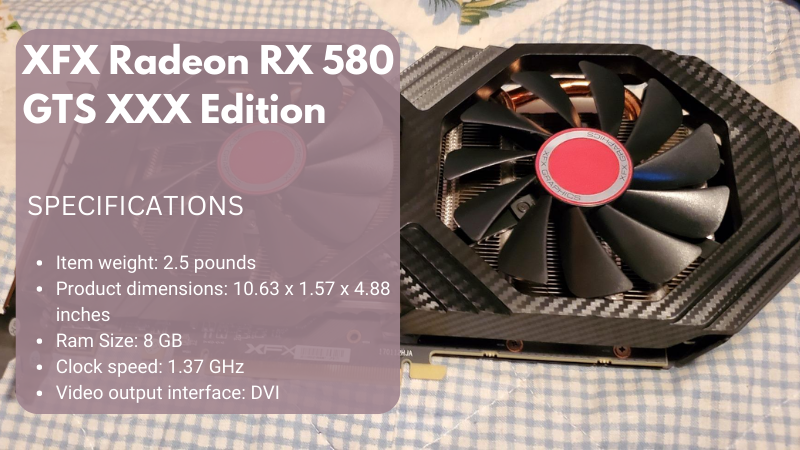
Stefan’s Take:
I have tested numerous games on XFX Radeon RX 580 GTS, on 1080p and 720p, and different FPS, and in all cases, the games ran smoothly, the image quality was great, and I didn’t notice any dropped frames.
One feature that I particularly appreciated was the low noise. It’s significantly quieter than any high-powered fan while preventing overheating.
| Memory | 10 |
|---|---|
| Cooling | 9 |
| Clock speed | 10 |
| Power | 9 |
In case you are still struggling to choose between SLI or Crossfire, after presenting one of the SLI cards, I would like to talk about XFX Radeon RX 580 GTS XXX Edition 1386MHz OC+ to discuss the benefits of AMD.
Without a doubt, these are two of the biggest manufacturers in the tech world – when it comes to GPUs, you cannot make a mistake by choosing either.
Of course, people often prefer one over the other, so now let’s see what makes Crossfire so great.
Key features
One thing that makes this card superior to the one I previously reviewed is the Ram Size.
8 GB is more than enough to process any video game, run a stream, and stream software at the same time.
Once you provide good internet speed, as well as adjust the settings, everything will run smoothly. Dropped frames or any lags shouldn’t concern you.
With such outstanding RAM, the card will also work great for any media expert that requires multiple programs running at the same time.
Furthermore, its efficiency is boosted by True Clock.
Overclocking is regulated by BIOS to make sure that the card is running at an optimal level at all times.
The manufacturer encourages all of their buyers to test the factory-tested speeds to see what this card can do and what its limits are.
Energy usage will still be significant (probably around 500 Watts), so check beforehand whether you can meet this requirement.
When it comes to cooling, AMD has implemented new technology – it has VRM and Memory cooling, so the temperature of the system can be reduced by 20′, while the noise level is lowered by around 5%, still ensuring a quiet working environment.
Pros
- Great noise reduction
- 8 GB of RAM
- Superior True Clock technology for increased efficiency
Cons
- Requires 500 Watts to run
3. ASUS GeForce RTX 2070
Best for gamers
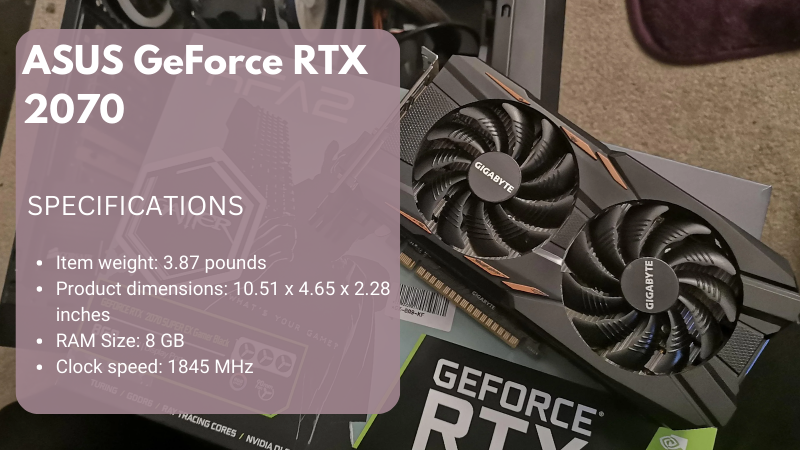
Stefan’s Take:
This graphic card is simply a beast and engineered at another level. RTX 2070 can overclock to more than 2100 MHz and performs incredibly well at 1080p, so you can run almost any game you want. Also, it supports 4K gaming and up to 4 monitors, which is ideal for competitive gamers.
What I particularly liked were the Axial-tech fans that ensured good airflow and prevented overheating without making much noise.
| Memory | 9 |
|---|---|
| Cooling | 9 |
| Clock speed | 10 |
| Power | 9 |
Many people have started looking into different video cards so that they can use multiple monitors, and this ASUS GeForce RTX 2070 will allow you to connect up to four.
So far, I have discussed SLI and Crossfire and the benefits of each. And this is another card that supports SLI, so if this is your preference, ASUS is always a good choice.
In the tech world, ASUS is a well-established brand, especially among gamers.
Let’s see which requirements you have to meet for this GPU.
Key features
I have mentioned two video cards with 8 GB of RAM. This is an outstanding capacity, and previously I talked about AMD, so now I will discuss the one that supports SL]. In the end, you can compare the two and pick the one that suits you best.
This one comes with a 2.7-Slot, which promotes cooling. Two fans will ensure enough airflow while boosting effectiveness.
Considering how powerful this GPU is, you would probably expect a large hub. However, ASUS has incorporated the Axial-tech fans, and they managed to keep the hub in a smaller size, so there is no problem with compatibility and larger blades.
The downward air pressure is carefully controlled by the barrier ring – it is increased to the needed level, and the life span of the product is boosted by IPS5X.
Another way in which the longevity is increased is by proper choice of materials: alloy chokes, as well as capacitors made of polymers.
Furthermore, graphics engines are there to add to your gaming experience.
This is one of the best graphics cards for gamers, as it allows multiple features, from ray tracing and sampler feedback to mesh shaders and VRS.
If you are into 4K gaming, then this one is the best among all products.
Pros
- Supports 4K gaming
- Dust-resistance and premium choice of materials for longer life span
- Superior capacity
Cons
- The most expensive on the list
Conclusion
It is hard to say whether dual graphics cards are worth it.
As stated, this mostly depends on your needs and what you want to achieve.
If you decide to get one, make sure you have enough energy to supply the card and enough money in the bank for the higher power bills.
And if you’re still struggling to decide, check out my top three picks once again:
- EVGA GeForce GTX 1650 as the best overall,
- XFX Radeon RX 580 GTS XXX Edition with a great RAM size,
- ASUS GeForce RTX 2070 as best for gamers.
Frequently Asked Questions
What is the point of dual GPUs?
The whole point of getting a dual graphics card is to increase efficiency. Instead of a single card handling all of the work, it will be split between the two. For example, during the live stream, games will run on one, while the other will handle the rendering.
The same rule goes for any work done on the computer. That is why they are useful even for media experts that have to use multiple high-demanding programs simultaneously on their computer – one line is being rendered on one card and one on another.
Are dual GPUs worth it?
Yes and no – it depends on what you are doing on your computer. If you are an average gamer, it will most likely be a waste of money. Before purchasing one of the dual GPUs, take into account the cost.
Firstly, you will have to spend a few hundred dollars on the GPU itself. Then you have additional costs of setup and energy usage. In this case, it would make more sense just to purchase a single, high-end GPU. For professional streamers, multi-GPU is a good choice.
Are dual-fan graphics cards better?
Yes. More airflow is always a better option, especially if the heatsink is similar. Keep in mind that this could also mean more noise. Even though many multi-GPUs have some type of noise reduction, the level will still be higher compared to the single fan.




